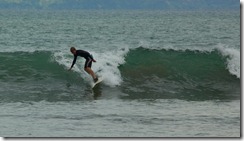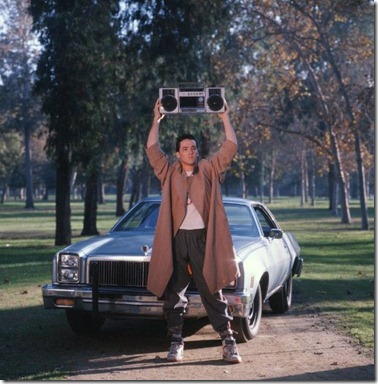And Other Tales of Bahasa Indonesia
“So will the laundry be ready by tomorrow morning?” I asked.
“Yes,” the woman answered, “or maybe yesterday.”
‘Yesterday?’ I thought. I wondered at her comment in my head, although my surprise must have also shown on my face. At our previous accommodations, laundry had come back the next day or even the same day. But this was something new – the phenomenal return time she proposed was a bit unbelievable.
Of course, it was just a language mix-up, one of many which we have grown accustomed to. Like all the other times, it was cleared up quickly. She had obviously meant ‘today’, which made more sense, although it was not as much fun as imagining our t-shirts and underwear traversing the fourth dimension.
Plenty of people in the small towns we’ve stayed in speak a little English, mainly thanks to the presence of other surfers and travelers like ourselves. But that wasn’t always enough to get by, so Paul has been working diligently to learn Bahasa Indonesia, the Indonesian language. I’ve picked up a few things too, since it’s not a terribly difficult language. But along the way we’ve discovered a number of similar sounding words that have very different meanings. For example:
Tiga (TEE-gah) – Three
vs
Tidak (TEE-dah) – No
and
Bawah (BAH-wah) – Below
vs
Bawang (BAH-wang) – Onion
 Luckily, we haven’t had many problems with those sets, and mixing them up wouldn’t be a big deal. But I discovered another pair that could result in some major confusion. Most small towns have a village head, the kepala desa, whom you would ask for if you needed to stay a night in town and there were no regular accommodations available. However, it would be bad to mix that up with kelapa, the word for coconut – you might find yourself asking for The Village Coconut. And before I looked up the exact meanings of each word, I worried that a mix-up could have you calling the chief The Head Coconut.
Luckily, we haven’t had many problems with those sets, and mixing them up wouldn’t be a big deal. But I discovered another pair that could result in some major confusion. Most small towns have a village head, the kepala desa, whom you would ask for if you needed to stay a night in town and there were no regular accommodations available. However, it would be bad to mix that up with kelapa, the word for coconut – you might find yourself asking for The Village Coconut. And before I looked up the exact meanings of each word, I worried that a mix-up could have you calling the chief The Head Coconut.
With problems like that, it is important to be able to say what you mean. Our guidebook was a good start – it helped us learn useful phrases like, “Where is the bathroom?” and, “I’d like to order the grilled goat, please.” But it is fairly limited, and when we are away from the vast resources of the internet, and we most often are, it frequently comes up short. It provided little aid in communicating truly important things, such as: “My room has bees,” or, “There are goats in your rice,” or, “Come quickly! The third monkey is back!”
 In our quest for a larger Indonesian vocabulary, multilingual product packaging has been fairly helpful, and often amusing as well. As with many languages, translating Indonesian into English is less of a science than an imprecise art, especially when attempted by those with a limited and fuzzy understanding of the real meanings and best uses of words. The intentions are sincere, but you end up with things like toilet paper that will bring your family ‘soft’ values, or sauce that provides ‘a delicious taste of food’.
In our quest for a larger Indonesian vocabulary, multilingual product packaging has been fairly helpful, and often amusing as well. As with many languages, translating Indonesian into English is less of a science than an imprecise art, especially when attempted by those with a limited and fuzzy understanding of the real meanings and best uses of words. The intentions are sincere, but you end up with things like toilet paper that will bring your family ‘soft’ values, or sauce that provides ‘a delicious taste of food’.
 While most labels are useful aids to communication, they can also be deceiving. The front of a package of margarine featured the word ‘serbaguna’, which we assumed to mean ‘margarine’. However, when Paul tried to purchase more, repeating “Serbaguna, serbaguna!” only produced blank stares and a few chuckles from various food store staff. It was only after returning home without success that he had the time to research the word and find out that he had been insisting, “Multipurpose, multipurpose!” to the baffled locals.
While most labels are useful aids to communication, they can also be deceiving. The front of a package of margarine featured the word ‘serbaguna’, which we assumed to mean ‘margarine’. However, when Paul tried to purchase more, repeating “Serbaguna, serbaguna!” only produced blank stares and a few chuckles from various food store staff. It was only after returning home without success that he had the time to research the word and find out that he had been insisting, “Multipurpose, multipurpose!” to the baffled locals.
Sometimes, no translation is necessary – the Indonesian words are entertaining by themselves. For example, the word for water is ‘air’, the word for hour is ‘jam’, and the word for for paint is ‘cat’. We’ve gotten used to some things like that, but it’s still a bit odd to consume beverages whose main ingredients include air. Despite that sort of confusing translation, there are plenty of cognates – words that sound similar in both languages. Es=ice, botol=bottle, and so forth. And most importantly, as this image of our feline friend demonstrates, the word for tea is teh.
Overall, learning Indonesian has been an entertaining process. From bees in our room (it was really a gigantic wasp-type thing) to time-traveling laundry, we’ve experienced the joys and the challenges of the age-old problem that is multi-lingual communication. I encourage you to try it some time, with a language of your choice. For now, this is The Village Coconut, signing out.

















 This file is licensed by
This file is licensed by  This file is licensed by
This file is licensed by